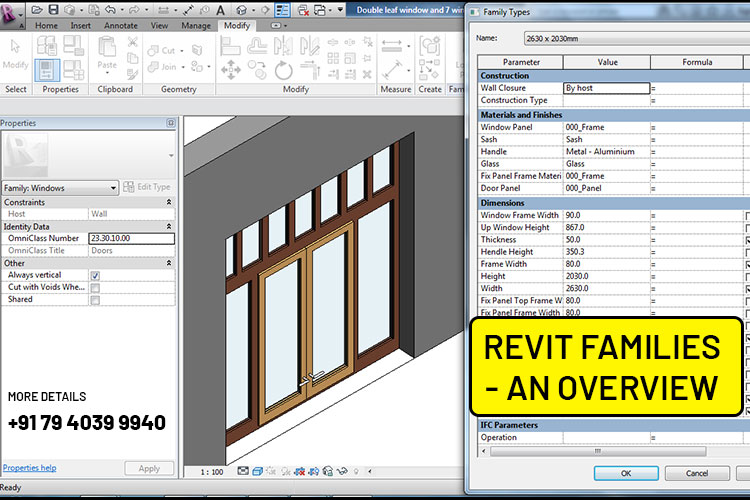Revit Families – An overview

Revit Families are an important tool which has a significant impact on the AEC industry. These parametric tools have driven the success of the industry by their range, the ease with which they can be modified, the amount of data they can store and the final resultant savings in cost and time. They are to put it briefly the building blocks of any 3D model. Below we look at what are Revit Families, their types and how Revit Family Creation Services can be used in the AEC industry.
What are Revit Families?
Revit Families are components that are used to design walls, windows, stairs, doors etc. in the 3D Revit model. Any Revit Family has common set of properties which are called as parameters and also a related graphical representation. Each Revit Family can also have type like size, materials, parameter variables etc. Autodesk Revit already provides an inbuilt library of 3D elements, whose parameters can be altered according to the project requirements. However, the ready-made library is minimal and may not always match the specifications that the architect, engineer or BIM technician requires. In this case the designer can make Revit Families with required specific geometry.
Table of Contents
Revit Families provides a wide variety of benefits to the AEC industry. It saves time and makes it possible to manage the projects more effectively. It allows to have more control by allowing to add standard and custom elements. It also facilitates an ease in modifications as any changes that are made in one instance of the Revit Family are simultaneously made throughout the project.
Classification of Revit Families:
There are three types of Families in Revit.
System Families:
A system family in Revit is the one which is used to create the basic elements in the 3D model like the walls, slabs, windows, etc. They are already present in the Autodesk library and cannot be edited, only their configurations can be altered. They are embedded in Revit projects and cannot be created or deleted but can be transferred between projects.
Loadable Families:
Loadable families are created in an external RFA file and are then transferred to the RVT file. They are ideally the largest area of content that is used in the 3D Revit project. Loadable families are used for components that are to be purchased, fabricated, delivered, assembled and installed.
In-Place Elements:
It is only when there is a project which requires distinctive geometry that the in-place elements are used in Revit. It can be used when there are unique architectural facades, any specific MEP component etc.
Uses of Revit Families for construction professionals:
Revit Families can significantly benefit the construction professionals from architects to structural engineers to MEP technicians. Architects can use them to model doors, windows, facades, caseworks etc. It can be particularly beneficial to the interior designers who can use Revit Families to model furniture, equipment etc. like sofa, chairs, lights etc. Similarly, for structural engineers it can be used to create steel sections, structural connections like mounting parts, base plates, gusset plates etc. When it comes to MEPF, Revit Families are particularly advantageous. It can be used to model mechanical elements like HVAC, Duct Hanger, Air Terminals etc. or plumbing families like pumps & valves, fixtures, fittings etc. Finally, in-place elements can be used to create unique design elements pertaining to either architectural, structural or MEP.
Thus by utilizing Revit BIM Services to create Revit Families AEC professionals could seriously augment their designing process. Revit Families allows to accelerate workflow as Revit families just need to be designed once following which they just need to be inserted at the required places. Moreover, since it can be conveniently used not just in one project environment it also ends up saving the amount of time any designer spends on the project and ultimately the cost.